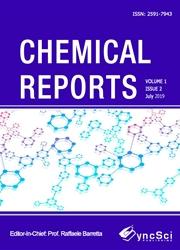Recent progress on electrochemical production of hydrogen peroxide
引用次数: 8
Abstract
Hydrogen peroxide (H2O2), first synthesized in 1818 through the acidification of barium peroxide (BaO2) with nitric acid, is a clear and colorless liquid which is entirely miscible with water and variety of organic solvents such as carboxylic esters. Anthraquinone process (an old production process of H2O2), a batch process carried out in large facilities is an energy demanding process that requires large facilities, and involves oxidation of anthraquinone molecules and sequential hydrogenation. Moreover, the direct synthesis method enables production in a continuous mode as well as it permits small scale, decentralized production. Many drawbacks associated with these processes such as, energetic inefficiency and inherent disadvantages have motivated researchers, industry and academia to find out alternative for synthesis of H2O2. Electrochemical route based on catalyst selectively reduce oxygen to hydrogen peroxide. O2 is cathodically reduced to produce H2O2 via 2-electron pathway or 4-electron pathway to get H2O. Electrolysis of water has an important place in storage and electrochemical energy conversion process where problem is to choose a sufficiently stable and active electrode for anodic oxygen evolution reaction. Most commonly used catalysts on the cathode are carbon based materials such as carbon black, carbon nanotubes, graphite, carbon sponge, and carbon fiber. In perspective of expanding demand of production and usage of hydrogen peroxide we review the past literature to summarize different production processes of H2O2. In this review paper, we mainly focus on electrochemical production of hydrogen peroxide along with other alternatives such as, anthraquinone method for industrial H2O2 production and direct synthesis process. We also review the catalytic activity, selectivity and stability for enhanced yield of H2O2. From revision of experimental and theoretical data from the past literature; we argue that successful implementation of electrochemical H2O2 production can be realized on the basis of stable, active and selective catalyst.电化学生产过氧化氢的研究进展
过氧化氢(H2O2)于1818年首次由过氧化钡(BaO2)与硝酸酸化合成,是一种透明无色的液体,与水和羧酸酯等多种有机溶剂完全混溶。蒽醌工艺(一种老的H2O2生产工艺)是在大型设施中进行的间歇式工艺,是一种需要大型设施的高能耗工艺,涉及到蒽醌分子的氧化和顺序加氢。此外,直接合成法使生产在连续模式,并允许小规模,分散生产。这些工艺的诸多缺点,如能量效率低下和固有的缺点,促使研究人员、工业界和学术界寻找H2O2合成的替代方法。基于催化剂的电化学途径选择性地将氧还原为过氧化氢。O2通过2电子途径或4电子途径阴极还原生成H2O2得到H2O。电解水在储存和电化学能量转换过程中占有重要地位,而选择足够稳定和活性的电极进行阳极析氧反应是电解水的关键问题。阴极上最常用的催化剂是碳基材料,如炭黑、碳纳米管、石墨、碳海绵、碳纤维等。从双氧水生产和使用需求不断扩大的角度出发,回顾了以往的文献,总结了不同的生产工艺。本文主要介绍了电化学生产过氧化氢的方法,以及工业生产过氧化氢的蒽醌法和直接合成过氧化氢的方法。并对提高H2O2收率的催化活性、选择性和稳定性进行了综述。从以往文献的实验和理论数据的修正;我们认为,在稳定、活性和选择性催化剂的基础上,可以成功地实现电化学生产H2O2。
本文章由计算机程序翻译,如有差异,请以英文原文为准。
求助全文
约1分钟内获得全文
求助全文

 求助内容:
求助内容: 应助结果提醒方式:
应助结果提醒方式:


